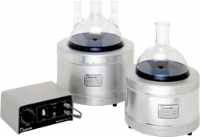 |
 |
| MSDS Topics |
Free Sites | FAQ's | Regulations | Glossary | Software | Suppliers |
| Books | Forum | Poll | Fun stuff | Quiz | Store | |
| MSDS and safety supplies | Search ALL our MSDS info | |||||
 | |||
 |
 |
 |
|
| Title:02/05/2004 - Material safety data sheet requirements for experimental chemical mixtures that are shipped off-site. | |
| Record Type: Interpretation | Standard Number: 1910.1200; 1910.1200(b)(3)(iv); 1910.1200(g) |
Kevin Coppola, Ph.D.
437 LSU Avenue
Baton Rouge, Louisiana 70808
Dear Dr. Coppola:
|
Thank you for your June 30, 2003 letter to the Occupational Safety and Health Administration. Please be aware that this response may not be applicable to any question or scenario not delineated within your original correspondence. You had specific questions regarding material safety data sheets (MSDSs). Your paraphrased statement and questions are below, followed by our response. Statement: I am a Ph.D. chemist working in a chemical research laboratory. I have been told that OSHA regulations require me to develop MSDSs for newly synthesized chemicals and minor impurities isolated from chemicals. There are only a few grams of these chemicals that exist, they are not commercial, and their chemical identities are unknown. These chemicals are shipped to other laboratories for characterization, testing and analysis, and they are handled exclusively by trained professionals in laboratories that comply with the laboratory standard. I do not believe that developing MSDSs for these chemicals would add to laboratory safety, and I am uncomfortable developing MSDSs for substances for which I am unsure of the chemical identities. |  Heating stirring mantles are just one laboratory accessory you can get from Safety Emporium. |
Question 1: Is there an MSDS exemption from the requirements for newly synthesized and uncharacterized chemicals?
While your laboratory may not have information concerning the precise nature of the synthesized chemicals, it is likely that your laboratory has a significant amount of important and relevant information concerning these chemical mixtures. For instance, the newly synthesized chemical would be just one component in a mixture comprised, in part, of the original reactants. If this is the case, the MSDS must include the hazard information for the un-reacted components. Additionally, chemists generally have a good sense for the structure of the chemical they are attempting to synthesize or purify. This type of information is important to those who handle or use the chemicals at other facilities, and this information (in an MSDS) must be provided to downstream handlers/users at other laboratories
Although the research scientist may not be aware of the exact formulation of experimental mixtures and may have limited information on the health hazards, any information which is known about the mixture must be conveyed. For instance, this would include: the hazard information for the un-reacted components (as already discussed); the name of the mixture as described on the label; the name, address, and telephone number of the responsible party; and the date the MSDS was prepared.
In short, while much of the specific information for the newly synthesized chemical may not be available, the MSDS must be as complete as possible and must be transmitted when the hazardous chemicals are shipped. This information provides a basis of knowledge for the recipient laboratory and is the best, and often only, source of information they will have when they receive the mixture.
Get your organic laboratory equipment and glassware from Safety Emporium.
Response: OSHA's Hazard Communication Standard (HCS) 29 CFR 1910.1200 requires that manufacturers prepare and transmit MSDSs with the initial shipment of all hazardous chemicals. Research facilities which synthesize or produce chemicals are considered chemical manufacturers, if they ship hazardous chemicals, and must develop MSDSs for the hazardous chemicals that they produce and distribute to other workplaces. While the HCS is based on known information and does not require testing of chemicals in determining health effects, any relevant information which is known about the chemical or the mixture must be conveyed in the MSDS.
Question 2: Is there a MSDS exemption from the requirements based on the sample size?
Additional information which must be included when available includes: the presumed chemical structure(s) or name(s); the physical description of the mixture; and other information in the possession of the generating laboratory (e.g., melting point, boiling point, vapor pressure, etc.). All applicable sections of the MSDS must be filled out. If no information is known for a specific section of the MSDS, there must be a statement on the MSDS that such information is either not known or not applicable. 
|
Thank you for your interest in occupational safety and health. We hope you find this information helpful. OSHA requirements are set by statute, standards, and regulations. Our interpretation letters explain these requirements and how they apply to particular circumstances, but they cannot create additional employer obligations. This letter constitutes OSHA's interpretation of the requirements discussed. Note that our enforcement guidance may be affected by changes to OSHA rules. Also, from time to time we update our guidance in response to new information. To keep apprised of such developments, you can consult OSHA's website at http://www.osha.gov. If you have any further questions, please feel free to contact the Office of Health Enforcement at (202)693-2190. Sincerely,
Richard E. Fairfax, Director |  Equip your lab with eye washes, safety showers, signs and more from Safety Emporium. |
The official, public domain, OSHA version of this document is available at http://www.osha.gov/pls/oshaweb/owadisp.show_document?p_table=INTERPRETATIONS&p_id=24782&p_text_version=FALSE